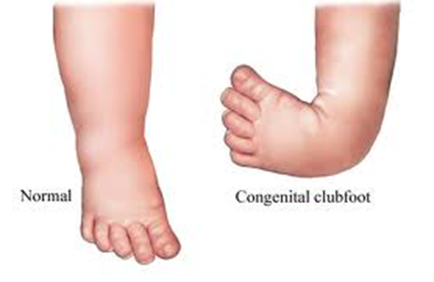A nurse is developing a plan of care for a 4-year-old child who has hemophilia and is experiencing acute hemarthrosis. Which of the following interventions should the nurse include in the plan?
Have the child perform passive range-of-motion exercises.
Administer aspirin as needed for pain.
Place ice packs on the affected joints.
Position the lower extremities below the level of the heart.
The Correct Answer is C
A. Have the child perform passive range-of-motion exercises: This is not recommended during acute hemarthrosis in hemophilia because it can further exacerbate bleeding and increase joint damage. Passive range-of-motion exercises should be avoided until bleeding has been adequately controlled.
B. Administer aspirin as needed for pain: Aspirin is not recommended for pain management in hemophilia due to its antiplatelet effects, which can further prolong bleeding. Instead, acetaminophen (Tylenol) or other nonsteroidal anti-inflammatory drugs (NSAIDs) that do not affect clotting mechanisms may be used for pain relief.
C. Place ice packs on the affected joints: This is a recommended intervention. Ice packs can help reduce inflammation and swelling in the affected joints, providing pain relief and potentially slowing down bleeding. However, it's important to ensure that the ice pack is wrapped in a cloth or towel to prevent direct contact with the skin, which could cause tissue damage.
D. Position the lower extremities below the level of the heart: This is not recommended. Elevating the affected extremity above the level of the heart can help reduce swelling and minimize bleeding. Placing the lower extremities below the level of the heart could potentially increase bleeding.
Nursing Test Bank
Naxlex Comprehensive Predictor Exams
Related Questions
Correct Answer is D
Explanation
A. Ophthalmologist: This healthcare professional specializes in the diagnosis and treatment of eye disorders. While eye problems can occur in infants, congenital talipes equinovarus specifically involves foot deformities rather than eye issues. Therefore, a referral to an ophthalmologist wouldn't be appropriate for this condition.
B. Nutrition counselor: A nutrition counselor provides guidance on diet and nutrition-related issues. While nutrition is essential for overall health, it's not directly related to the treatment of congenital talipes equinovarus. Therefore, a referral to a nutrition counselor wouldn't typically be part of the care plan for this condition.
C. Speech therapist: Speech therapists, also known as speech-language pathologists, specialize in evaluating and treating communication and swallowing disorders. However, congenital talipes equinovarus doesn't affect speech or swallowing. Therefore, a referral to a speech therapist wouldn't be relevant for this condition.
D. Orthopedic specialist: An orthopedic specialist is a healthcare professional who specializes in the diagnosis and treatment of musculoskeletal conditions, including congenital abnormalities like clubfoot. They are trained to assess the severity of the deformity and develop a treatment plan, which may include non-surgical or surgical interventions to correct the foot alignment. Therefore, a referral to an orthopedic specialist is the most appropriate choice for an infant with congenital talipes equinovarus.

Correct Answer is A
Explanation
A. Oucher pain rating scale: The Oucher pain rating scale uses pictures of children's faces to represent varying degrees of pain intensity. This scale is specifically designed for young children and can be effective in assessing pain in preschool-aged children who may not yet be able to accurately use verbal descriptors to express their pain.
B. Word-Graphic rating scale: This type of scale presents both words and pictures to represent different levels of pain intensity. While it may be suitable for older children who can understand and use words to describe their pain, it may be less effective for a 4-year-old child who is still developing language skills.
C. Numeric rating scale: Numeric rating scales typically ask the child to rate their pain on a scale from 0 to 10, with 0 representing no pain and 10 representing the worst pain imaginable. While this scale may be appropriate for older children, it may be challenging for a 4-year-old to understand and use numbers to describe their pain.
D. Visual analog scale: Visual analog scales typically consist of a line with endpoints labeled "no pain" and "worst pain imaginable," with the child asked to mark or point to the spot on the line that represents their pain level. While this scale may be suitable for older children and adults, it may be too abstract for a 4-year-old child to understand and use effectively.

Whether you are a student looking to ace your exams or a practicing nurse seeking to enhance your expertise , our nursing education contents will empower you with the confidence and competence to make a difference in the lives of patients and become a respected leader in the healthcare field.
Visit Naxlex, invest in your future and unlock endless possibilities with our unparalleled nursing education contents today
Report Wrong Answer on the Current Question
Do you disagree with the answer? If yes, what is your expected answer? Explain.
Kindly be descriptive with the issue you are facing.
